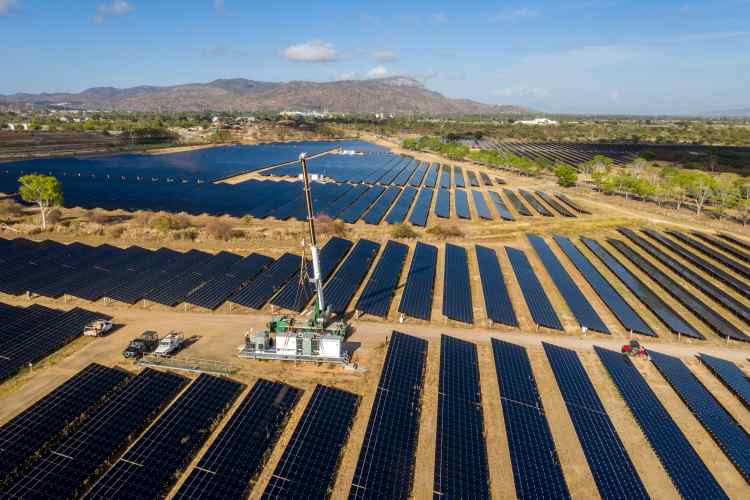Grid stability and secure returns with renewable energies

The energy transition will succeed only if the majority of our electricity is generated from renewable energy sources in the future. However, this poses a major challenge: How can energy suppliers that depend on the weather reliably and continuously feed electricity into the utility grid? SMA offers a range of technical solutions that not only ensure grid stability but also open up new sources of revenue with secure returns for power plant owners and operators.
Continuous supply of electricity – even in volatile times
Water, sun and wind levels are inherently variable. The amount of green electricity generated fluctuates depending on the weather conditions. For a sustainable energy transition, however, there are no alternatives. The only way to mitigate climate change in the future is to ensure that fossil energy suppliers are replaced by renewable ones and that our electricity comes entirely from carbon-free sources. From the perspective of consumers, this is not an immediate problem because wind, solar and water energy is capable of covering all our energy requirements. To bridge periods of low sunshine or wind, energy can be stored in large battery systems. This compensates for energy fluctuations and ensures that green electricity is available around the clock, whatever the weather.
Grid forming ensures stability of power grids
Switching to renewables entirely, however, poses a fundamental challenge for transmission grid operators. Gas-fired, oil-fired, coal-fired and nuclear power plants, both generate energy and provide grid forming capability. The synchronous machines at the power plants ensure a stable grid voltage with a uniform frequency thanks to their inertia. This ensures a continuous supply of electricity even if the power generated at a specific moment in time cannot cover demand. This imbalance can arise as a result of, for example, generator or large load failures or large-scale grid separations.
If decentralized renewable energy producers assume the energy supply work of centralized power plants, they will also have to form and stabilize the power grid. This concept of grid forming is also indispensable for wind, solar and hydroelectric power plants because, in most cases, they need to transport the generated electricity over long distances from remote locations to consumers. The risk of failures, grid separations and, in turn, power imbalances is especially high when long transport distances are involved. This means that grid operators have to ensure grid stability as well as the supply of electricity.
How does grid forming work?
Grid forming SMA solution for battery-storage power plants stabilizes voltages and frequencies
The SMA solution for battery-storage power plants is an integrated system consisting of plant control (SMA Power Plant Manager) and inverters (SMA Sunny Central Storage). With the grid forming solution integrated at plant level, the power plant interacts with the utility grid as a single unit.
The SMA solution has to not only convert direct current to alternating current, but also support grid stability. Unlike the synchronous generators used in large power plants, however, battery-storage power plants do not have a rotating mass and so lack the inertia required to instantly compensate for generation deficits. This function – also known as “instantaneous reserve” – is performed by the grid forming SMA solution in utility grids that rely solely on renewable energy generators. To achieve this, they have to imitate the inertial reaction of a synchronous generator.
Since inverters do not have rotating masses, however, this function has to be programmed using control algorithms. Only then can grid forming inverters, orchestrated by the SMA Power Plant Manager, work in the same way as the synchronous generators of conventional power plants and provide instantaneous reserve from the battery-storage system to keep the utility grid stable in response to fluctuations. This technology is already being used in initial large-scale storage systems – in the U.S., for example. SMA is helping partners around the world to prepare initial large-scale grid stabilization projects and is in direct dialogue with grid operators in these countries, which are leading the way in the energy transition.
You want to learn more about SMA’s grid forming solutions?




Hi can you plz inform me which SMA on the grid inverter can work with the diesel generator at the time of the grid shut down
Hello Mehryar,
There are several options to replace diesel generator or to save fuel and use it less often. Either a large system based on Sunny Central Storage UP can be used if the total power is between 2 MW (and up to GW range). If the system is very small a three-phase configuration of Sunny Island inverters might be an option (in the 10 kW and up power range). Both options – of course – preferably combined with a PV system for charging.
Sunny regards
Christiane